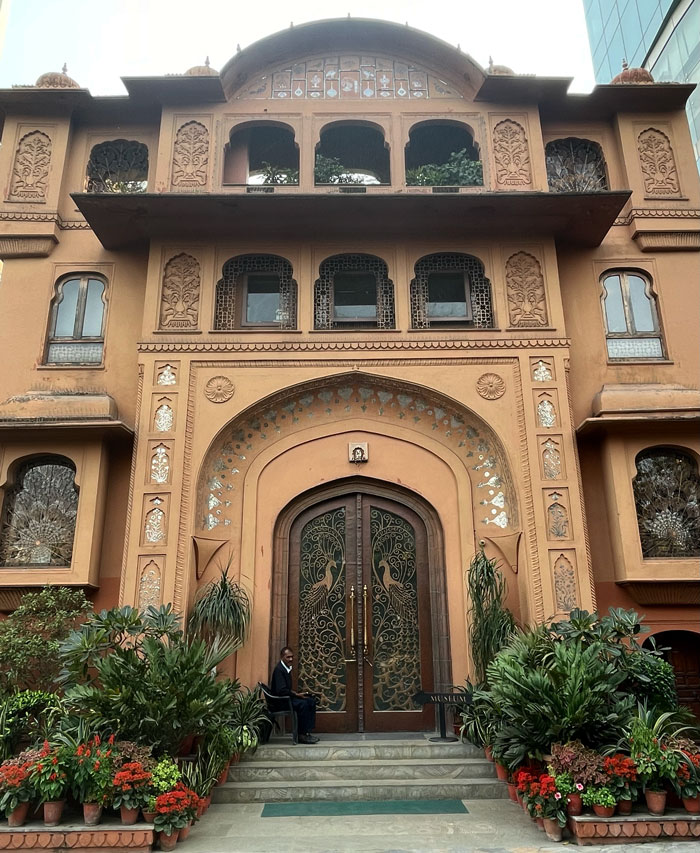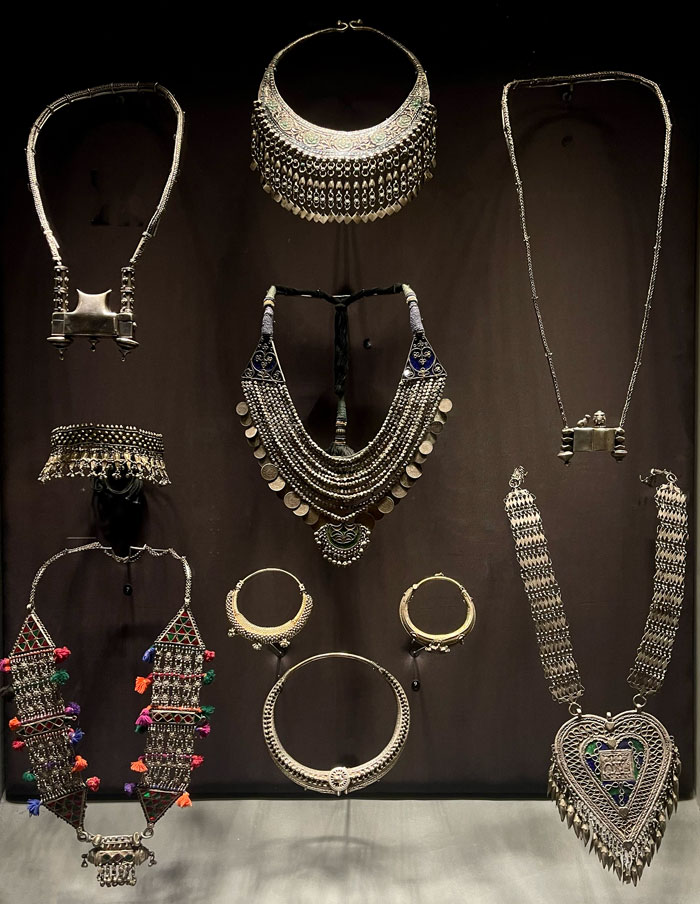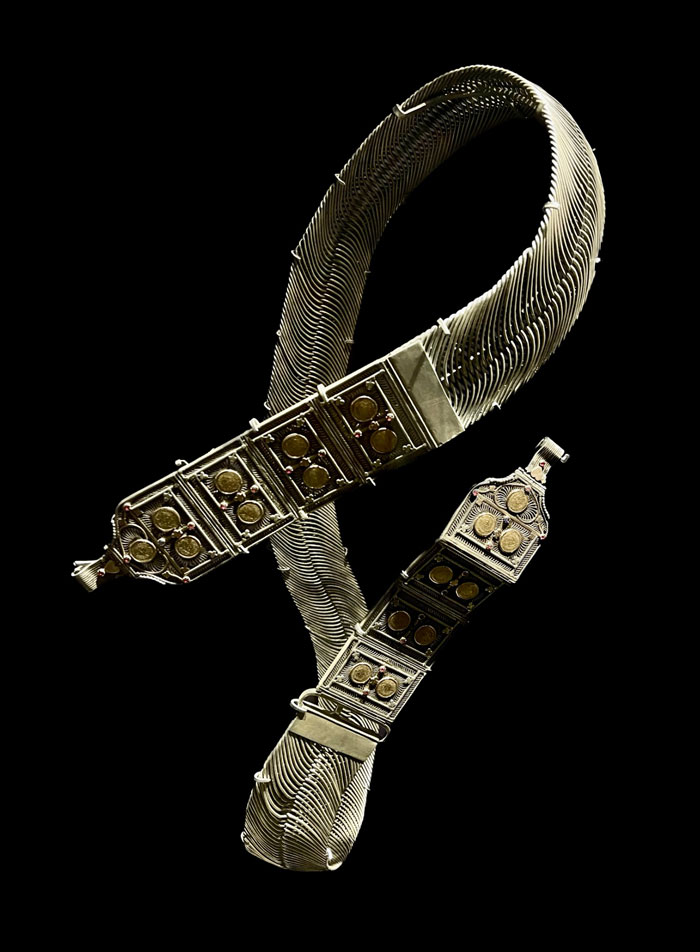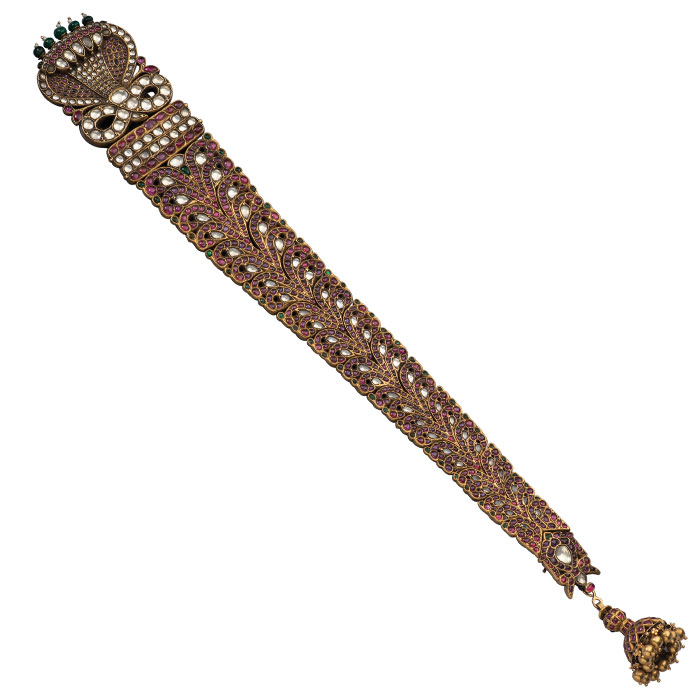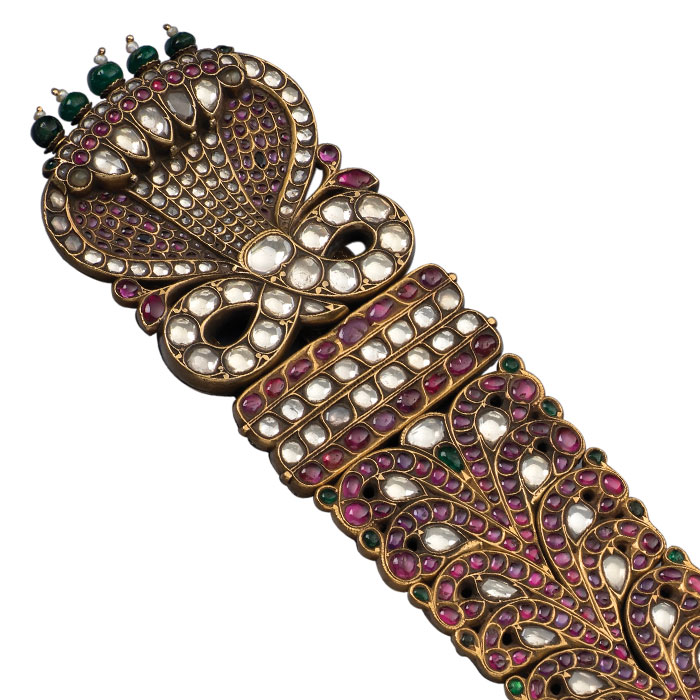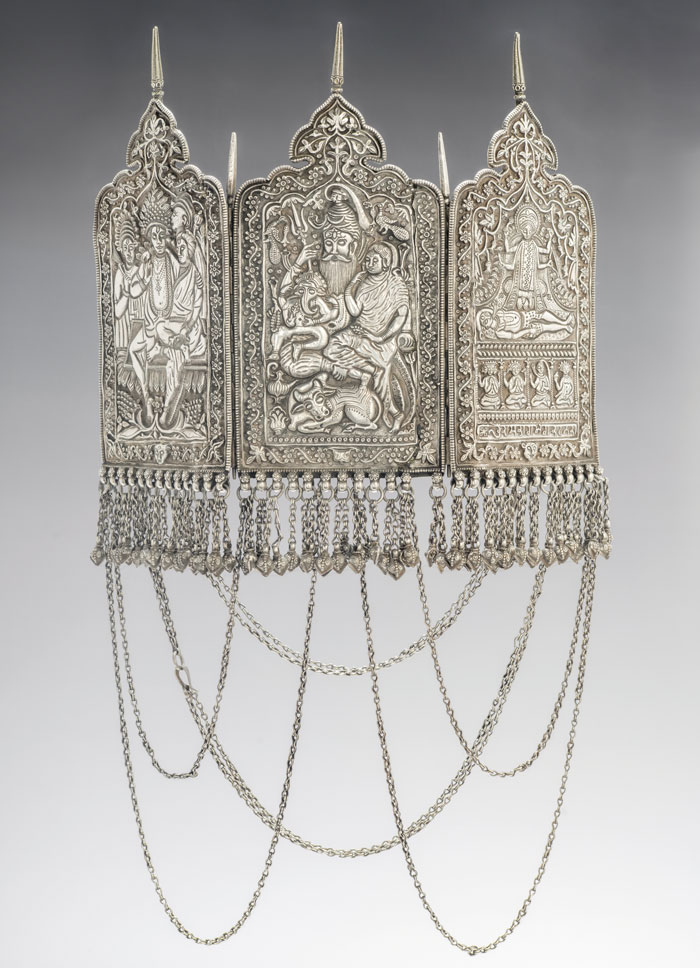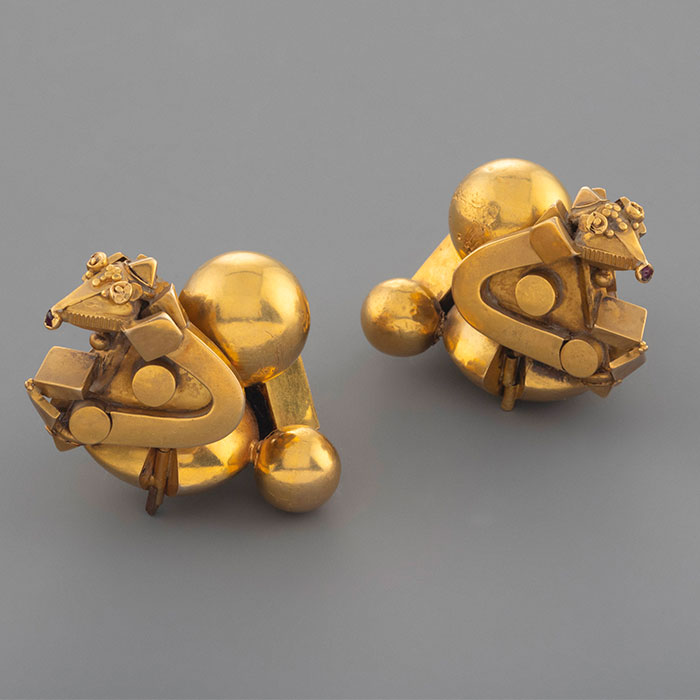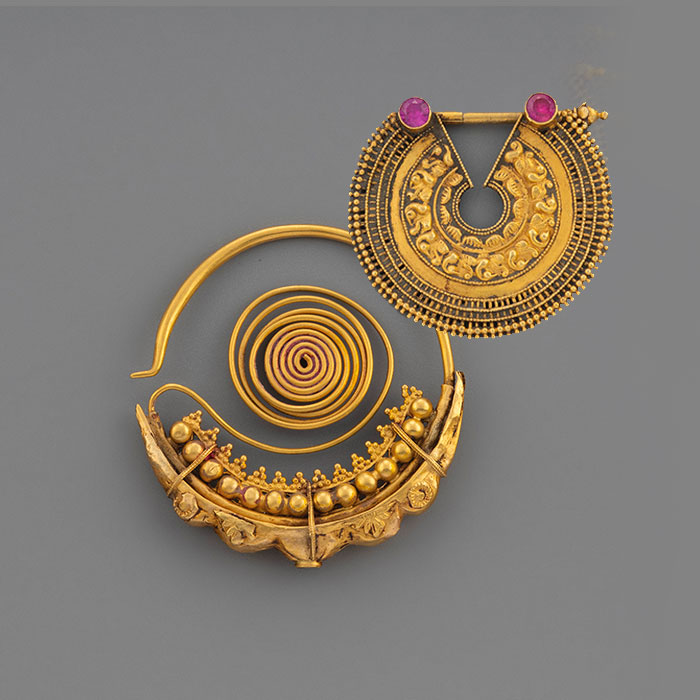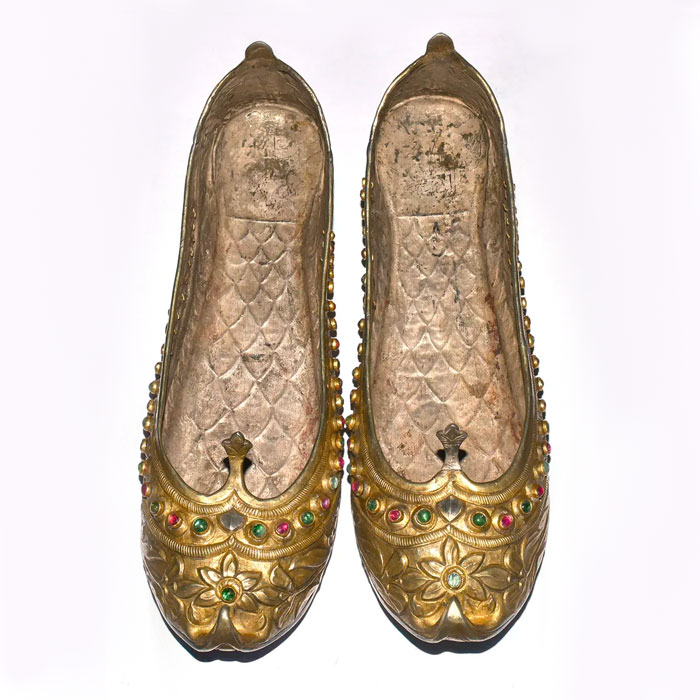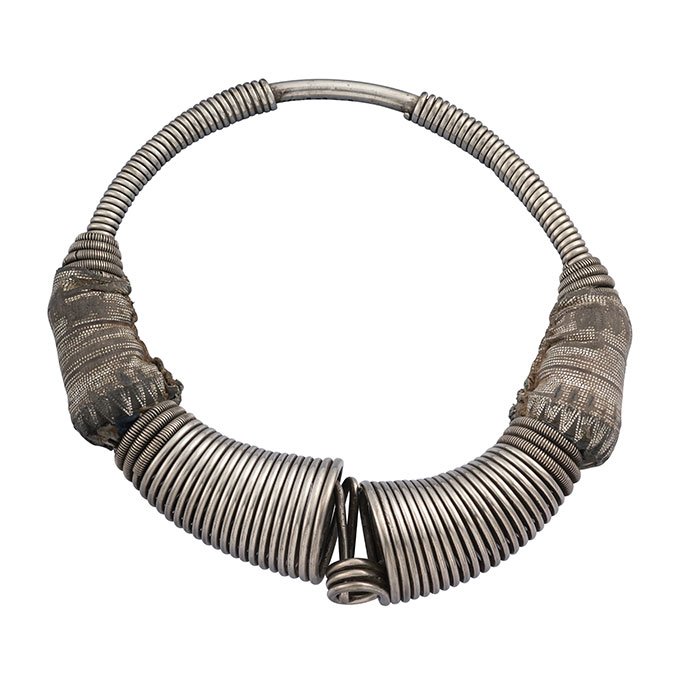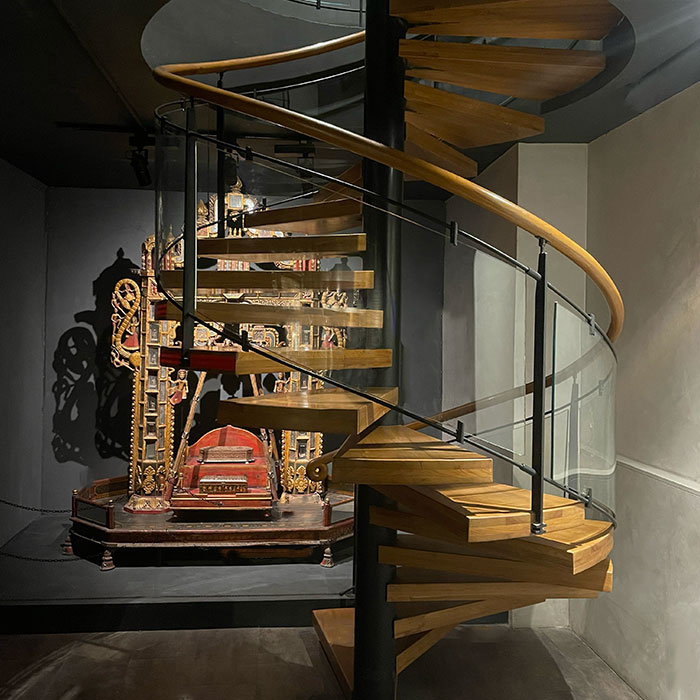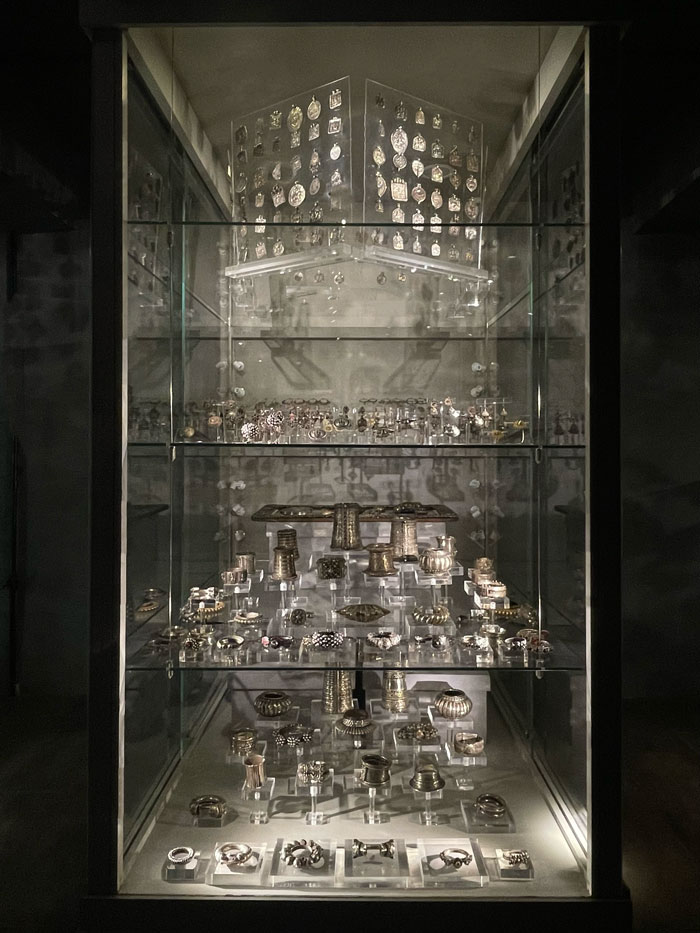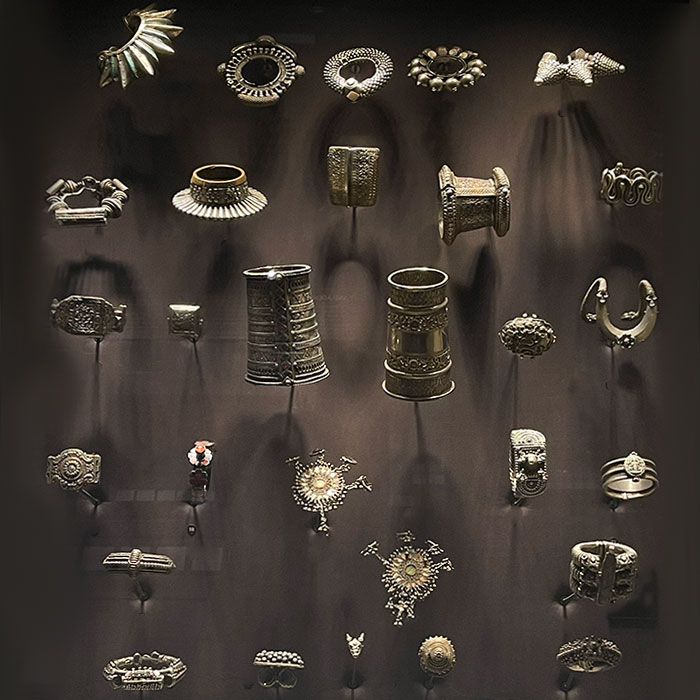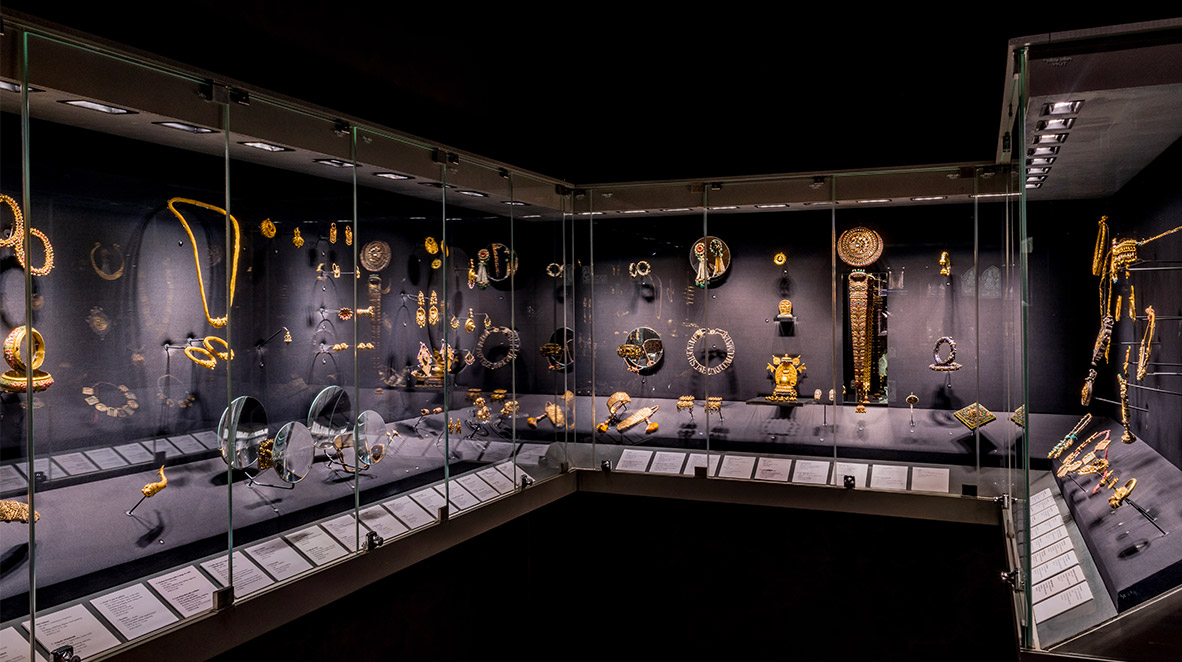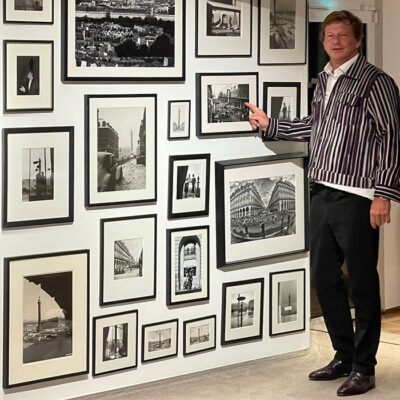Jewelers routes
17 April 2023
Share
6 reasons to visit the Amrapali Museum in Jaipur
During my last trip to Jaipur, I was delighted to discover this museum – the only such institution in the world dedicated to Indian jewelry, and home to an exceptional private collection.
By Sandrine Merle.
1/ A unique museum
Surprisingly, despite India’s thousand-year-old jewelry tradition, this is the world’s only museum entirely devoted to the subject. It was opened in 2011 by Rajiv Arora and Rajesh Ajmera, the founders of the Amrapali brand, whose jewelry is inspired by traditional pieces. For 40 years, the duo have crisscrossed the country, from Tamil Nadu to Gujarat and from Assam to Kerala, building up a collection of 4,000 pieces. Over two floors, they exhibit 850 pieces, mainly from the 19th and 20th centuries, including earlier jewelry which was dismantled and melted down to create new pieces.
2/ An introduction to the complexity of symbolic language
The jewelry on the ground floor revolves around rites of passage – offering an opportunity to try to understand its significance. Through their contact with chakras and pulsation points, these pieces are designed to improve balance and harmony in body and mind. Tributes to deities mingle with prophylactic virtues – depending on the communities from which they emerged. Take for example the jadai nagam (literally “hair serpent”) where everything is a metaphor: the cobra symbolizing fertility and sensuality adorns a braid evoking the confluence of the three Indian rivers that in turn represent the Hindu Trinity.
3/ The infinite repertoire of forms
The treasure trove of jewelry in the basement features an incredible range of ornaments – no surprise perhaps because in India the body is adorned from head to toe. In addition to necklaces, the forehead is decorated with a borla and the braids with a jadai nagam (of which the museum has two magnificent specimens). The rings that decorate the nose are equivalent to wedding bands in the West. The ears are weighed down with kathila, thandatti (gold leaf shaped into geometric volumes), bugadior koppu (placed on the top of the ear) and nath (with a chain joining the head) which elongate the lobe. The waist is encircled with chains that are also found at the ankles. The toes are provided with rings.
4/ A tribute to “humble” ornaments
This Amrapali collection contrasts with the Al Thani collection, with its focus on exceptional pieces created for maharajahs, in that it highlights tribal jewelry worn daily or during festivities. Jewelry is seen as a store of value and a form of insurance, with even poor women sporting cascades of necklaces, ankle chains, and earrings that they can sell in case of need. The focus on such “humble” jewelry partly explains the predominance of silver (evoking the moon) which is less expensive. Silver is also considered refreshing in certain hot and arid regions such as Rajasthan, while pure gold is rather associated with the burning heat of the sun.
A travel around the Al Thani collection
Indian jewelry at the Victoria & Albert Museum
5/ An illustration of unbridled expertise
Whether made of gold or silver, daily or made for marriage, these jewelry pieces testify to the extraordinary know-how still practiced by 3 million goldsmiths in the country. They excel in the work of chiseling, hammering, repoussé, and stamping, combining these skills in particular in jewelry designed for the groom’s crown. Not a square millimeter is left unworked. Enamel is present everywhere, including on the back of the pieces. And to hold the stones in place, artisans use a kundan setting with a hammer from previously heated gold leaves rather than the claws preferred in the West.
6/ A gateway to India
For jewelry enthusiasts traveling to India, this Amrapali museum in Jaipur, the epicenter of jewelry, is the ideal starting point to understand the multifaceted nature of ornamentation. Thousands and thousands of people are involved in the manufacturing, enameling and cutting of colored stones or indeed their trade. So when you leave the museum, your exploration of jewelry should continue: don’t miss the stores like those in the Gem Palace and make sure to stroll through the Johari bazaar, the lively jewelry district.


